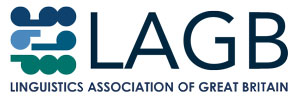Call for papers
The Second Edinburgh Symposium on Historical Phonology
The call is now closed
Featuring the Angus McIntosh Centre for Historical Linguistics 2015 plenary speaker
3rd–4th December 2015, Informatics Forum, University of Edinburgh.
What do we need to consider in order to understand phonological change and to reconstruct past phonological states? The symposium will offer an opportunity to discuss fundamental questions in historical phonology as well as specific analyses of historical data.
Our plenary speaker, sponsored by the Angus McIntosh Centre for Historical Linguistics, is:
- Ranjan Sen (University of Sheffield)
The invited speaker will address foundational issues in the discipline over two one-hour slots, one on each day of the symposium, and there will be considerable time allocated to discussion.
We see historical phonology as the branch of linguistics which links phonology to the past in any way. Its key concerns are (i) how and why the phonology of languages changes in diachrony, and (ii) the reconstruction of past synchronic stages of languages’ phonologies. These are inextricably linked: we need to understand what the past stages of languages were in order to understand which changes have occurred, and we need to understand which kinds of changes are possible and how they are implemented in order to reconstruct past synchronic stages.
We define phonology, broadly, as that part of language which deals with the patterning of the units used in speech, and we see historical phonology as an inherently inter(sub)disciplinary enterprise. In order to understand (i) and (ii), we need to combine insights from theoretical phonology, phonetics, sociolinguistics, dialectology, philology, and, no doubt, other areas. We need to interact with the traditions of scholarship that have grown up around individual languages and language families and with disciplines like history, sociology and palaeography.
The kinds of questions that we ask include at least the following:
- What changes are possible in the phonology of a language?
- What types of units and domains do we need to refer to in order to capture phonological change?
- What is the precise patterning of particular changes in the history of particular languages?
- How do changes arise and spread through communities?
- What counts as evidence for changes or for the reconstruction of languages’ phonology?
- Which kinds of factors can motivate or constrain change?
- Are there factors which lead to stability in language, and militate against change?
- To what extent is phonological change independent of changes that occur at other levels of the grammar, such as morphology, syntax or semantics?
- How can the results of historical phonology inform phonological theorising?
- What is the relationship between the study of completed phonological changes and of change in progress?
- What is the relationship between phonological change, language variation, and language acquisition?
We invite one-page abstracts addressing these, or any other questions relevant to the symposium topics, by 15th June 2015.
We expect to keep the symposium fee low (in the region of £15–20).
Submission instructions
Please submit your abstracts via EasyChair. Abstracts should not exceed one A4 or US Letter page with 2.5 cm or 1 inch margins in a 12pt font. All examples and references in the abstract should be included on the one single page, but it is enough, when referring to previous work, to cite ‘Author (Date)’ in the body of the abstract — you do not need to give the full reference at the end of the abstract. Please do not submit an abstract if it goes over one page for any reason — it will be rejected.
To submit an abstract, please visit the EasyChair submission page. If you don’t already have an EasyChair account, you will have to create one (this is a quick process). Once you have logged in, click on ‘New Submission’ in the top left corner.
After filling in your contact information, enter the title of your abstract in the both the Title and Abstract fields, and provide three keywords in the keywords field. Upload your abstract in pdf format by clicking on ‘Choose a file’ at the bottom of the page. If you do not upload a PDF file, your paper cannot be considered for the conference.

